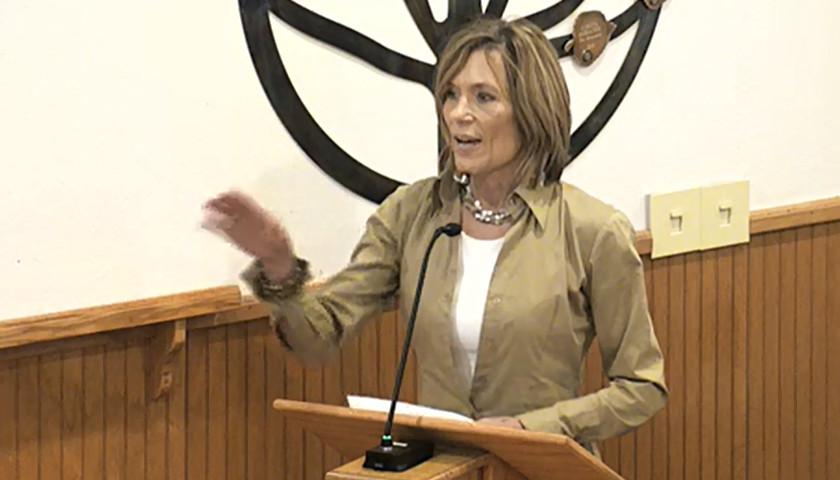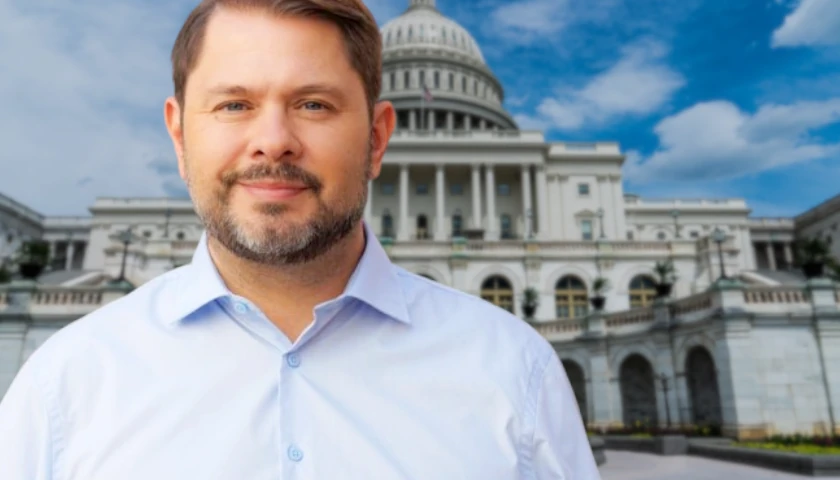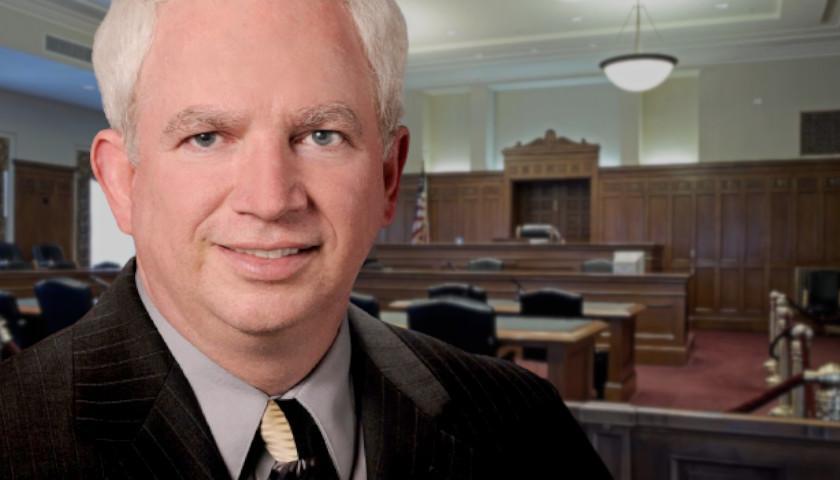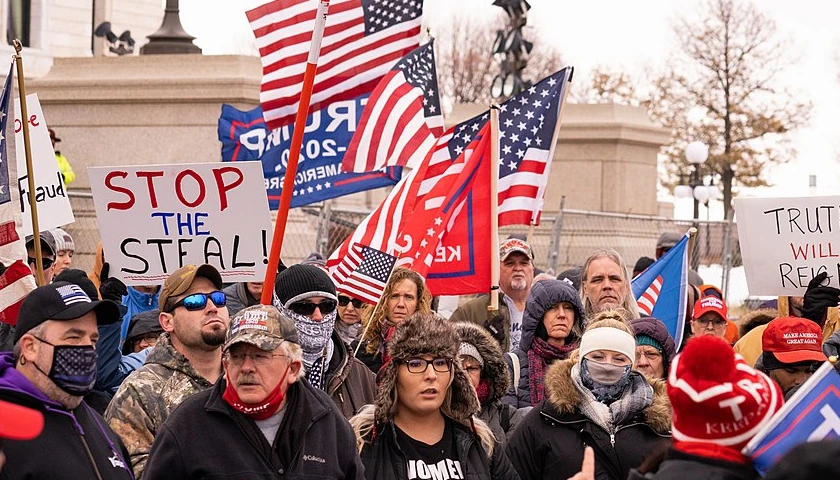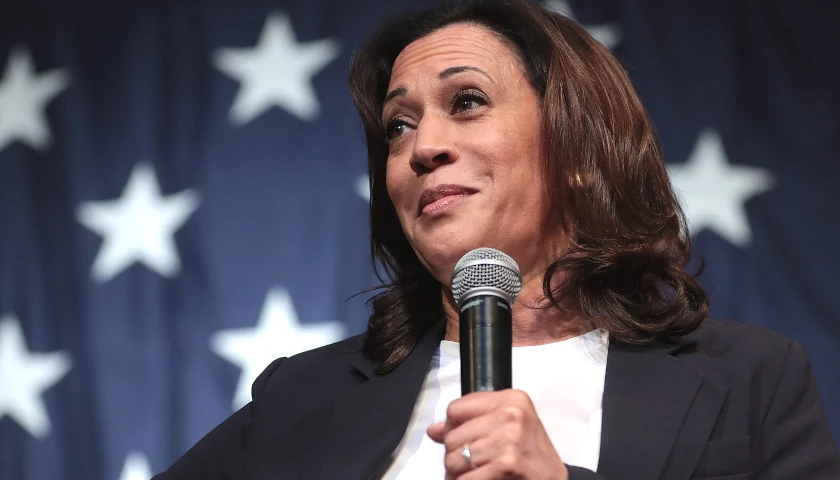Concerned Republican precinct committeemen and citizens in Navajo County, a small Republican-leaning county located in the northeastern part of the state, asked the Navajo County Board of Supervisors (NCBOS) recently to take election integrity measures, but are being stonewalled.
Celia Laughlin (pictured above) told The Arizona Sun Times that in place of addressing their questions and requests at the last board meeting on April 23, Navajo County Manager Bryan Layton “gave a poll worker’s civics class instruction instead.” Layton was appointed county manager less than a year ago, and prior to that he worked in Texas for 10 years.
Laughlin said she and other precinct committeemen first brought up their concerns at the March 12 board meeting. Laughlin asked for several items to be included at the next April meeting. She asked for consideration of an election integrity task force, ending the use of voting machine tabulators and replacing them with hand counts, and preserving the ballots from the 2022 election until investigators could inspect them.
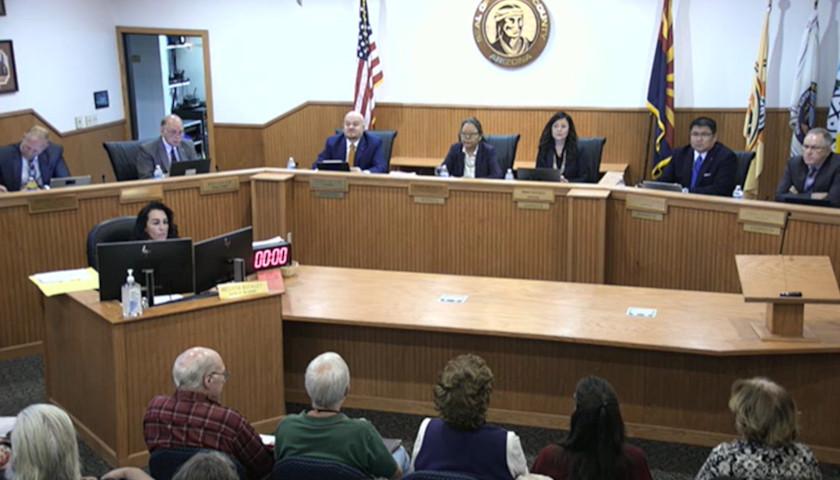
She elaborated, “We have received absolutely no signals from you, that you have any intentions of answering to us or receiving suggestions and excellent advice from the citizens that are actual solutions that would solve the issues that lead to the corruption discovered by evidence that has been produced, within even the last few months and years.”
Laughlin went on, “The voters are questioning the validity of elections across the country. And they are looking at Arizona specifically. You’ve embarrassed us. A task force to examine election processes and procedures in Navajo County would help restore confidence. … Who would it hurt to look closely at the county processes?”
She questioned the lack of monitoring on the ballot drop boxes. “Aren’t they supposed to be under 24-hour video surveillance?” she asked. “The county is spending $19 million to have fiber optic cables installed on the Rez [reservation], including to houses that are down dirt roads miles and miles away from towns and cities, but they won’t spend $150 per such a camera per drop box.”
Laughlin said, “The ERIC system needs to be gotten rid of,” and brought up the problem with voting machine tabulators connecting to the internet. “They have told us over and over again that the election recorder’s office is not on the internet,” she said. “Yet this is in the training manual that we have to have Wi-Fi at every poll location and election recorder’s office.”
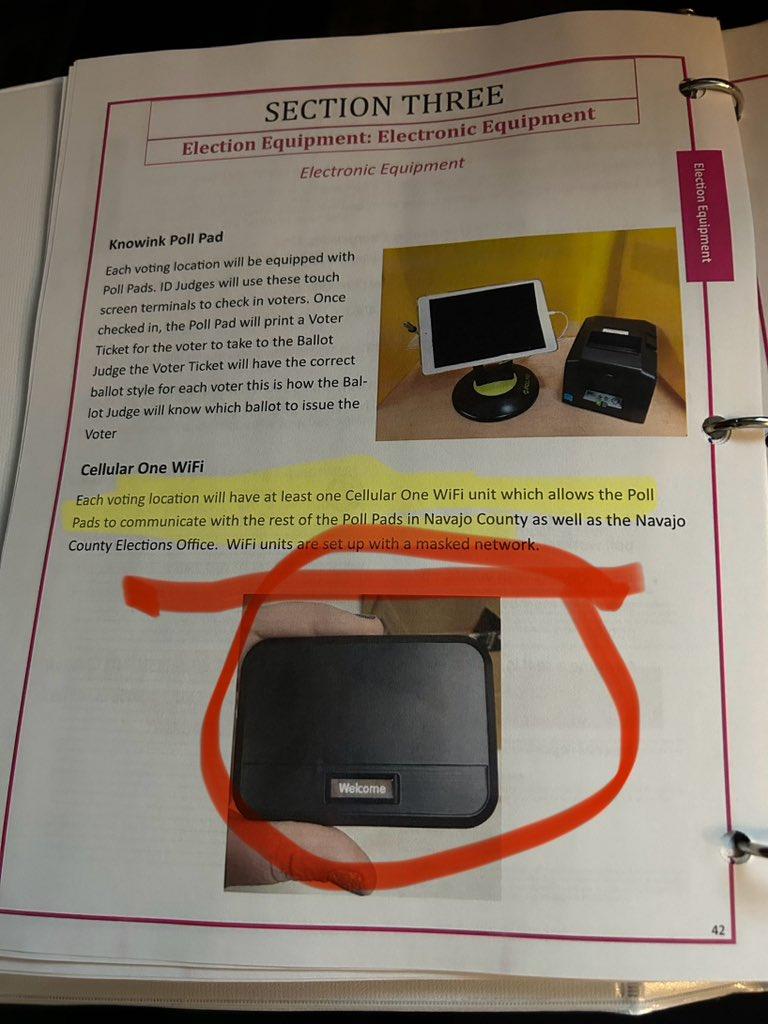
Laughlin told The Sun Times that at the end of the meeting, the two Republican supervisors agreed to add her items to the agenda for April, but the four Democratic supervisors refused. Celia said instead, the NCBOS added a page to their website which allowed residents to ask questions about election issues. People submitted over 60 questions. However, Celia said none of the questions were ever answered.
At the April 23 board meeting, several community members were given two minutes each to bring up their concerns. Rene Miles said she “submitted over 300 names of voters who had not voted for over 10 years that were likely deceased, had out of state registrations, or duplicate registrations within the state of Arizona.”
She went over problems with the county’s election procedures, concluding, “We request the county to review the information that’s been provided to your secretary and petition the legislature and Secretary of State to implement a more proactive approach to voter roll maintenance such as the one approved by the Supreme Court so that we can clear off these old registrations systematically, instead of requiring thousands of hours of research that nobody’s got the time for.”
Jim Vance told the NCBOS that he was looking forward to hearing their responses to the 60 questions that voters had submitted. “What needs to be instituted is same day voting with a hand count on the same day with results,” he said. “If Navajo County decides to continue to use electronic voting machines, they should at least require the modems be removed,” Vance added later.
John Major said he was concerned about unmanned ballot drop boxes. He said they’re “not secure” and “not monitored … there’s no surveillance cameras to prevent any ballot box stuffing.” He recommended, “There should be one polling place per precinct rather than large precincts with a lot of voting centers.”
Steve Carvalho said during the presidential preference election earlier this year, the first person to vote at a polling location, a Native American, brought in her early ballot to submit, “only to be told that she had already voted by the machine,” which he said wasn’t the only time it happened. He said the poll workers responded to her and said “she must have forgotten that she early voted.”
Laughlin spoke again, expressing concern about the voting machine tabulators. She said it is not known who is programming them, which may not be U.S. citizens. “And we don’t know the trail of chain of custody once they are programmed,” she added.
Jerry Hubbard said he’d spent much of the past three years “doing what I can to improve election integrity here in Navajo County, including becoming a poll worker for the last few elections.” He discussed the voting machine tabulators.
“Tell us that ES&S Model DS200 tabulators are not connected to the internet and can’t be hacked remotely,” he said. “I say, ‘Prove it.’ Often one of them, unless instructed for the presence of a wireless modem installed on the motherboard, as noted in a report in early 2020 by NBC News, hardly a right-wing news media organization.”
Layton responded to the speakers with a lengthy monologue discussing how the elections work and pushing back against the concerns. Instead of answering the 60 questions, he said, “We reached out to the Democrat and Republican Party chairs and asked them if they would take information that we were getting on our website and be able to address the questions.”
He said he would rather discuss “an overview of the elections process and your vote.” He began, “There’s a lot of detail that goes into elections. Elections are governed by state statute. Arizona hearings, and there’s also the election procedure manual, a lot, a lot of detail. There’s way more than we can cover today.”
Layton claimed that no data is “transmitted over Wi-Fi,” asserting that flash drives are used to transfer information. He said there is a “dedicated elections computer” where “kind of all the results come together,” that “is not on the county’s network,” nor “connected to anything.” He said it has “never been on the internet.”
He said since the machines weren’t connected to the internet, it wasn’t possible to hack the machines. He said there wasn’t evidence of more than a handful of miscast ballots. Layton claimed, “We have witnessed and audited 100 percent accuracy in our account right now.”
Instead of agreeing to look into the accusations of more registered voters than eligible voters, Layton suggested reasons for the discrepancy. He claimed that the U.S. census must have undercounted people in the area since it was rural and more difficult due to COVID-19, and missed counting “Snowbirds,” people who live in Arizona only during the cooler months. He said that 17-year olds are allowed to register to vote before they turn 18, so even though they can’t vote yet, they appear on the voter rolls.
He said trying to increase a hand count audit after the election beyond 150 ballots wouldn’t work since it would require a lot more workers, which would risk violating the law requiring confidentiality of the results. He complained that it would be a “monumental undertaking” hiring “three and four or 500 people,” requiring significant “time and effort.” He said it would cost “as much as $1.1 million to do a full hand count” and take days or a week, making the county miss the state’s deadline for reporting results.
Brian Steiner, who is part of a group working to stop the use of the machines in elections, said a similar argument made by election officials in Pinal County, which is roughly four times the size of Navajo County, was easily refuted. Steiner said only 160 volunteers were required to complete a full hand count. “[I]f you split those hours by the 160 volunteers, then it would only take 15.63 hours to count all ballots,” he told The Arizona Sun Times. “With polling places opening at 6 a.m. until 7 p.m., having results by 10 p.m. that night would be easily achievable, and this could be a great test to only using hand counting of ballots in the future.”
Laughlin said she and other concerned citizens will be meeting with Layton on Thursday to follow-up on their concerns.
Watch the full meeting.
– – –
Rachel Alexander is a reporter at The Arizona Sun Times and The Star News Network. Follow Rachel on Twitter / X. Email tips to [email protected].

